
My love for the decadent past
Sometimes I feel that I haven’t travelled much. At other times when I sit back and ponder, I realise that though there are many places in this world that I haven’t yet seen, I must have been blessed enough to have seen and travelled this far. With each little step I take, I realise that the World Awaits Me. Perhaps, that had been the idea behind the title of the parent category under which all my posts had been initially filed. I’ve renamed that category today as simply – Travel. The travel bug had bit me even before I could crawl and I have to thank my dad and his brilliant tenure in the Indian Administrative Service (IAS) for this. He indulged us to be a part of his whirlwind tours while he served various positions in the various government departments. Both my brother and I learnt beyond what was being taught within the four walls of our classrooms. We travelled a lot with our dad and accompanied his official entourage like two small excess baggage. The various colonial houses that we stayed in, managed to shape our childhood and was part responsible for shaping our personalities – seeking out for adventure all the time {a historical house that I grew up in}.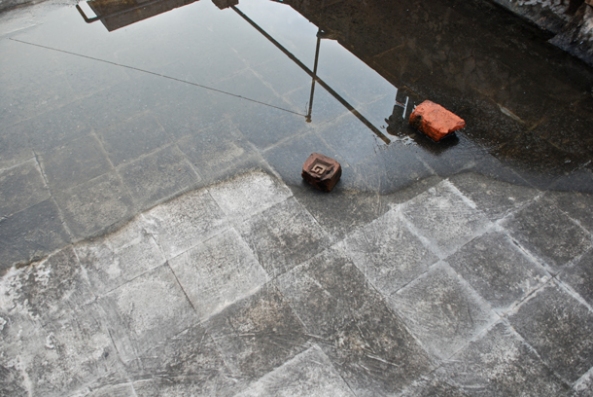 Probably, my love for old architecture and the intricacies of the structure of old buildings were ingrained from the very beginning. Moving to a city like Kolkata in the later stage of my schooling years magnified this love for decadence and history. I would be strolling forever in the terraces of old buildings and walk around North Kolkata which showcased the grandeur of Kolkata of yesteryears. At a later stage when I started travelling, it was quite obvious that I would be attracted by heritage sites and buildings. This post jots down all the UNESCO World Heritage sites that I’ve visited so far. The feeling of standing in a heritage site is unique and most of them listed here are either cultural or natural sites as categorised by the UNESCO list and not inscribed on the List of World Heritage in Danger. Unfortunately, not all the images shown here are mine as the travel bug had bit me long before the shutter bug bit me. And definitely much before the digital cameras came in. I have resorted to the web and the Wikipedia for a few images (these have been mentioned) and yes I realise today, that my Nikon has lost an opportunity… sigh! Here’s tracking my footprints…
Probably, my love for old architecture and the intricacies of the structure of old buildings were ingrained from the very beginning. Moving to a city like Kolkata in the later stage of my schooling years magnified this love for decadence and history. I would be strolling forever in the terraces of old buildings and walk around North Kolkata which showcased the grandeur of Kolkata of yesteryears. At a later stage when I started travelling, it was quite obvious that I would be attracted by heritage sites and buildings. This post jots down all the UNESCO World Heritage sites that I’ve visited so far. The feeling of standing in a heritage site is unique and most of them listed here are either cultural or natural sites as categorised by the UNESCO list and not inscribed on the List of World Heritage in Danger. Unfortunately, not all the images shown here are mine as the travel bug had bit me long before the shutter bug bit me. And definitely much before the digital cameras came in. I have resorted to the web and the Wikipedia for a few images (these have been mentioned) and yes I realise today, that my Nikon has lost an opportunity… sigh! Here’s tracking my footprints…
The UNESCO World Heritage List
A UNESCO World Heritage Site is a place (such as a forest, mountain, lake, desert, monument, building, complex, or city) that is listed by the UNESCO as of special cultural or physical significance. As of 2011, 936 sites are listed: 725 cultural, 183 natural, and 28 mixed properties. Italy is home to the greatest number of World Heritage Sites to date with 47 sites inscribed on the list.While each World Heritage Site remains part of the legal territory of the state wherein the site is located, UNESCO considers it in the interest of the international community to preserve each site.
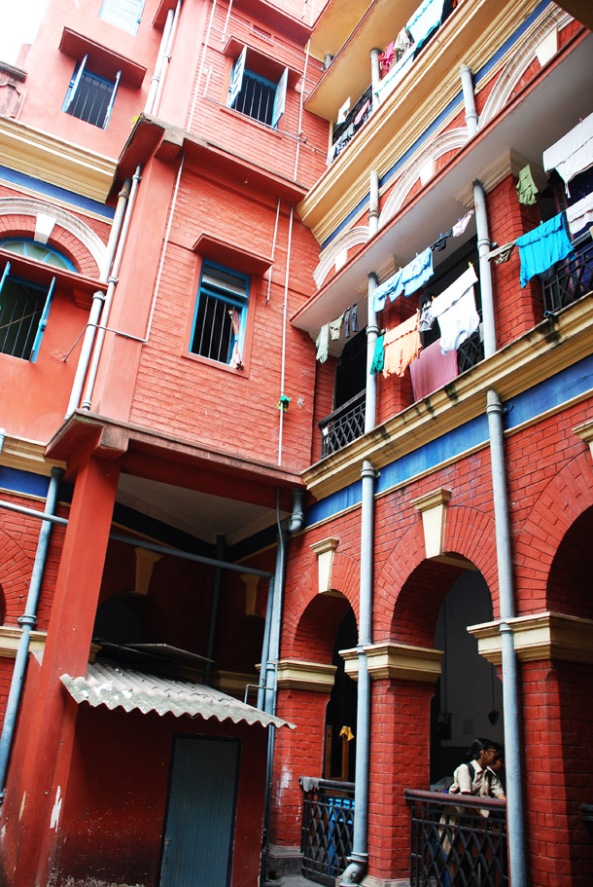 There is a lot of controversy and debate with regard to the sites chosen for UNESCO World Heritage sites. The debates touch upon issues which are political as well as socio-economic. I’m concerned with only one thing – if clustering a few sites under a certain banner can bring in more focus and attention towards better maintenance and preservation of that site – so be it. Kolkata is abundant with decadent colonial buildings and probably recognising a few of them as ‘heritage sites’ would bring in the necessary funds and expertise to preserve them. A small example, the old colonial building (above) which now houses a primary school where my Mum teaches – is in a state of absolute dilapidation. You just have to close your eyes to imagine the glory and the grandeur of this decaying house in the past. This house reflects the story that perhaps, many more houses in the city have to share.
There is a lot of controversy and debate with regard to the sites chosen for UNESCO World Heritage sites. The debates touch upon issues which are political as well as socio-economic. I’m concerned with only one thing – if clustering a few sites under a certain banner can bring in more focus and attention towards better maintenance and preservation of that site – so be it. Kolkata is abundant with decadent colonial buildings and probably recognising a few of them as ‘heritage sites’ would bring in the necessary funds and expertise to preserve them. A small example, the old colonial building (above) which now houses a primary school where my Mum teaches – is in a state of absolute dilapidation. You just have to close your eyes to imagine the glory and the grandeur of this decaying house in the past. This house reflects the story that perhaps, many more houses in the city have to share.
Though there are many more Heritage Sites in the world than the ones listed officially by UNESCO, an official recognition from such an international body brings in a lot of global attention and helps in preserving these sites (hopefully!). Visiting some of these sites – for example, in Waterloo where Napoleon battled it out or the freaky but beautiful bone church in Kutná Hora in Czech Republic or stuck in the swampy mangroves of the Sunderbans in Bengal… have been some of my incredible ‘travel moments’. It’s time for some stock taking (read travel introspection!) while looking at the foot marks on the sand by the beach, close to home.
I am elated! Dubai Creek could get the status of UNESCO World Heritage Site
Also close to home, Dubai Creek is in a bid to attain it’s status as a UNESCO World Heritage site (thank you Radhina of Platetrotter to bring my attention to this). As I have written in an earlier article before, the Dubai Creek has a lot of historical importance. Whereas most places in Dubai has a history running to as little as 2 to 5 years or a maximum 10 years, Dubai Creek is really the focal point in Dubai’s history. It is a natural sea-water inlet which cuts Dubai into two parts – the old part of the city known as Deira and the relatively modern part – the Bur Dubai. These two parts have their own uniqueness and identities, not to mention their own idiosyncrasies.The Dubai Creek is definitely one of the most amazing features of Dubai. It obviously doesn’t have the promenades, the upper-lipped gourmet restaurants and the exclusive lifestyle that the artificially built Dubai Marina boasts of. The Dubai Creek is real. It mirrors centuries of old trading traditions. Throughout the creek, starting from its initial inlet into the mainland Dubai one can still see the loading and unloading of trading goods from the traditional Dhows. The smells from the the various ports of origin for these Dhows, situated in distant countries like the South-East Asian countries, India, countries from Africa etc seem to pervade the air. Whereas, the trading boats are visible on the Deira side of the Creek, one can only find beautiful luxury private yachts, traditional wooden Dhows promising sunset and dinner cruises, on the Bur Dubai side of the Creek. The Dubai Creek has been very important in Dubai’s development as well, as Dubai started off as a small trading city, occupying a small dot on ancient trading routes connecting Asia-Europe-Africa. It still does.
Travelling is a very humbling experience indeed – it makes one realise how vast the world is, how diverse each culture is and how unique each individual is. What are your thoughts on this? Have you ever stood on a piece from history? Signing off by directing you to my previous post which has a brilliant blog giveaway.
Unblogging it all… Ishita
Disclaimer: The opinions stated here are my own and are independent. I hope you enjoy reading the posts with lot of visuals and probably the only post where much of the visuals have been gathered over the web. Please do not use any material from this post. You can see more pictures of my travel and food journey here.
◊—————————————————————◊
UNESCO World Heritage Sites in Europe that I have visited
Austria
Hallstatt-Dachstein / Salzkammergut Cultural Landscape 
Historic Centre of the City of Salzburg 
Heiligenkreuz Abbey (This is the oldest continuously occupied Cistercian monastery in the world and is a tentative UNESCO World Heritage site which has been submitted for inclusion)
Hohe Tauern National Park (The Hohe Tauern range includes Austria’s highest mountain, the Grossglockner. This is also the second highest peak in the Alps)
Belgium
Historic Centre of Brugge (Brugge is an example of a medieval historic settlement, where the architecture has evolved over the centuries, and where the original Gothic constructions form part of the town’s identity. This is also the birthplace of the Flemish Primitives which helped in the development of painting in the Middle Ages with artists such as Jan van Eyck and Hans Memling)
La Grand-Place, Brussels (These public and private buildings date back to the late 17th century)
Lieux de mémoire et monuments de la Grande Guerre: le Westhoek et Régions voisines (Places of memory and monuments of the Big War: the Westhoek and Regions neighbors – a tentative UNESCO World Heritage site which has been submitted for inclusion). The picture below shows the poignant Menin Gate in Ypres, a memorial for those missing belonging to the Commonwealth nations (except New Zealand and Newfoundland) and who died in the Ypres Salient during the First World War. Between 1914 and 1918, Ypres witnessed some of the bloodiest battles and suffered the greatest loss of lives of the First World War as Allied Forces fought against Germany.
Le champ de Bataille de Waterloo, la fin de l’épopée napoléonienne (The battlefield of Waterloo, the end of the Napoleonic epic) Napoleon’s headquarters during the battle, the Caillou (“Pebble”) Farm, is shown below. Also shown here is the Lion Mound or the famous morne plaine (further below) which has been described by Victor Hugo in his novels. The Lion Mound has been erected on the spot where Prince of Orange is believed to have been wounded. 


Le Panorama de la Bataille de Waterloo, exemple particulièrement significatif de « Phénomène de Panoramas » (The Panorama of the Battle of Waterloo, particularly significant example of ‘Phenomenon of Panoramas’) First unveiled in 1912, the panorama of the Battle of Waterloo, on an immense 110 m. long by 12 m. high circular painting portraying scenes from the battle fought on 18th June 1815. A central platform places the visitor in the very thick of a reconstructed clash between life-size infantrymen and cavalry brought vividly to life by the skilled use of perspective by the artist, Louis Dumoulin, with immensely realistic foregrounds. Quadraphonic sound effects make this unique panorama even more lifelike and impressive [Image and info Source: here]
First unveiled in 1912, the panorama of the Battle of Waterloo, on an immense 110 m. long by 12 m. high circular painting portraying scenes from the battle fought on 18th June 1815. A central platform places the visitor in the very thick of a reconstructed clash between life-size infantrymen and cavalry brought vividly to life by the skilled use of perspective by the artist, Louis Dumoulin, with immensely realistic foregrounds. Quadraphonic sound effects make this unique panorama even more lifelike and impressive [Image and info Source: here]
Czech Republic
France
Germany
Berlin Modernism Housing Estates
Cologne Cathedral (Image Source: Wikipedia)
Museumsinsel (Museum Island), Berlin (Image Source: Wikipedia)
Palaces and Parks of Potsdam and Berlin (Image Source: Wikipedia)
Pilgrimage Church of Wies, Steingaden
Upper Middle Rhine Valley  Situated in the the Upper Middle Rhine Valley, the Romantic Rhine Region between the city of Bingen and Koblenz, has been declared a UNESCO World Heritage Site. In this stretch of 65 kms, there are more than 40 ruined castles and palaces, all along the Rhine. Each ruin has its own story and each castle has its own legends – some happy and pleasant, while others are laden with heavy grief. (Below – Image Source: Wikipedia)
Situated in the the Upper Middle Rhine Valley, the Romantic Rhine Region between the city of Bingen and Koblenz, has been declared a UNESCO World Heritage Site. In this stretch of 65 kms, there are more than 40 ruined castles and palaces, all along the Rhine. Each ruin has its own story and each castle has its own legends – some happy and pleasant, while others are laden with heavy grief. (Below – Image Source: Wikipedia)
Würzburg Residence with the Court Gardens and Residence Square (Image Source : Wikipedia)
Heidelberg Castle and Old Town (This is a tentative UNESCO World Heritage Site submitted for inclusion)
Italy
Archaeological Area of Agrigento 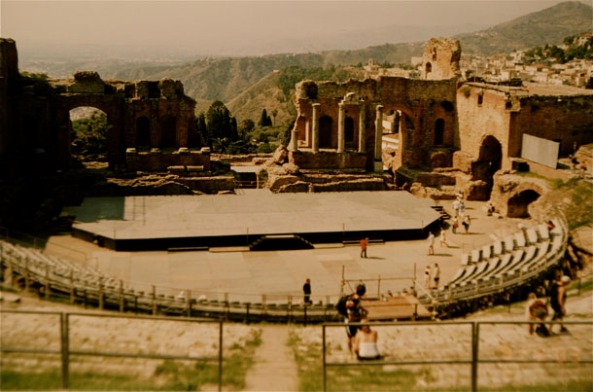
Piazza del Duomo, Pisa (Image Source : Wikipedia)
Portovenere, Cinque Terre, and the Islands (Palmaria, Tino and Tinetto) (Out of the 3 listed above, I have visited Cinque Terre, Image Source : Wikipedia)
Syracuse and the Rocky Necropolis of Pantalica (Image Source : Wikipedia)
Venice and its Lagoon (Image Source : Wikipedia)
Archaeological Areas of Pompei, Herculaneum and Torre Annunziata (Out of the 3 listed above, I have visited Pompeii, Image Source : Wikipedia) 
Historic Centre of Florence (Image Source: Wikipedia)
Historic Centre of Naples (Image Source: Wikipedia)
Historic Centre of Rome, the Properties of the Holy See in that City Enjoying Extraterritorial Rights and San Paolo Fuori le Mura (Image Source: Wikipedia)
Netherlands
Seventeenth-century canal ring area of Amsterdam inside the Singelgracht (Seventeenth-century canal ring area of Amsterdam inside the Singelgracht, stalls of the Bloemenmarkt (flower market) floating in the Singel)
Spain
La Lonja de la Seda de Valencia (The Silk Shop of Valencia/ La Lonja de la Seda de Valencia) 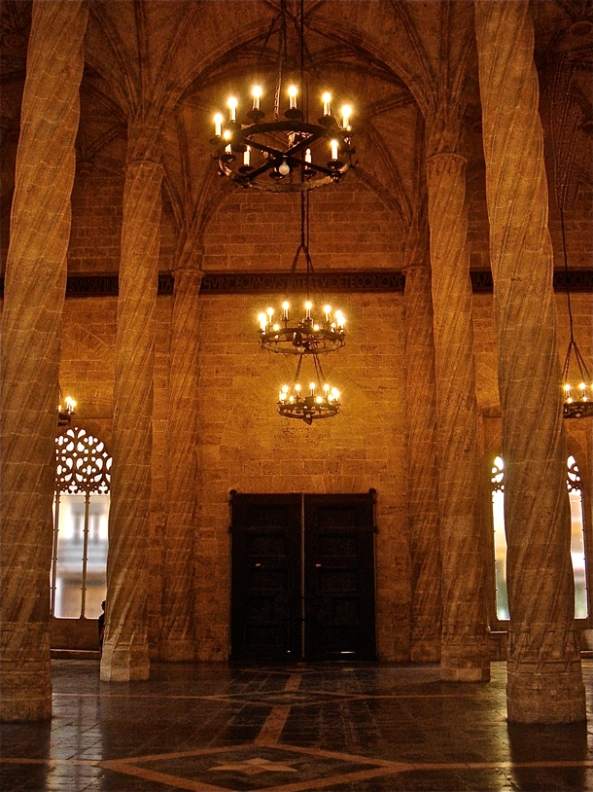
Switzerland
Lavaux, Vineyard Terraces (Image Source: Wikipedia)
Old City of Berne (Image Source: Wikipedia)
Rhaetian Railway in the Albula/Bernina Landscapes (Image Source: Wikipedia)
◊—————————————————————◊
UNESCO World Heritage Sites in India that I have visited
Chhatrapati Shivaji Terminus (formerly Victoria Terminus), Mumbai
Great Living Chola Temples, Thanjavur
Group of Monuments, Mahabalipuram
Mahabodhi Temple Complex, Bodh Gaya
Mountain Railways of India
Among the three railways that are still fully operational, I have had the experience to travel only on the first one-
- The Darjeeling Himalayan Railway was the first, and is still the most outstanding, example of a hill passenger railway. Opened in 1881, its design applies bold and ingenious engineering solutions to the problem of establishing an effective rail link across a mountainous terrain of great beauty.
- Nilgiri Mountain Railway, a 46-km long metre-gauge single-track railway in Tamil Nadu State was first proposed in 1854, but was completed in 1908.
- The Kalka Shimla Railway, a 96-km long, single track working rail.

Qutb Minar and its Monuments, Delhi
Sundarbans National Park (This is a natural site and not inscribed on the List of World Heritage in Danger. UNESCO has recorded Sunderbans as the only World Heritage site in West Bengal)
From the tentative UNESCO World Heritage List (submitted for inclusion)
Hill Forts of Rajasthan (Among the 5 forts listed, I have visited only Chittorgarh Fort. The others listed are – Kumbhalgarh, Gagron Fort, Ranthambore Fort, Amber Fort, Balor Fort, Bala Kila Fort)
◊—————————————————————◊
UNESCO World Heritage Sites in Asia (other than India) that I have visited
Srilanka
Old Town of Galle and its Fortifications 
Nepal
Kathmandu Valley – The cultural heritage of the Kathmandu Valley is illustrated by seven groups of monuments and buildings which are the Durbar Squares of Hanuman Dhoka (Kathmandu), Patan and Bhaktapur, the Buddhist stupas of Swayambhu and Bauddhanath and the Hindu temples of Pashupati and Changu Narayan. I have visited the Durbar Squares of Hanuman Dhoka (below) and the stupas of Swayambhu and Bauddhanath (further below).
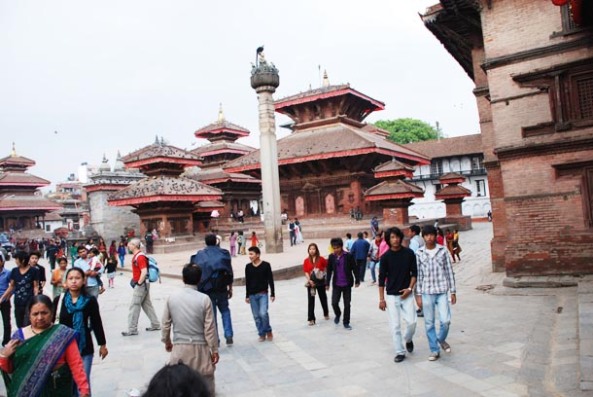
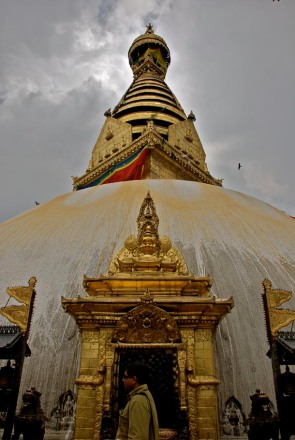
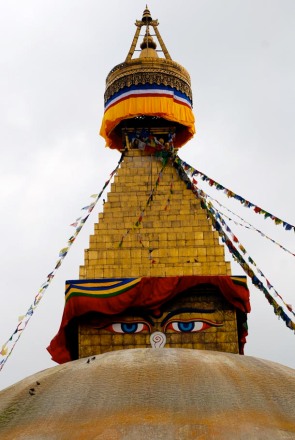
Sagarmatha National Park (The park includes the highest point on the Earth’s Surface, Mount Sagarmatha or the Mt Everest (8,848m). At an elevation range of 6,000m Sagarmatha National Park (SNP) covers an area of 124,400 hectares in the Solu-Khumbu district of Nepal. An exceptional area with dramatic mountains, glaciers, deep valleys and seven peaks other than Mount Sagarmatha over 7,000 m the park is home to several rare species such as the snow leopard and the red panda. We did have the unique experience of flying over the Mt Everest!)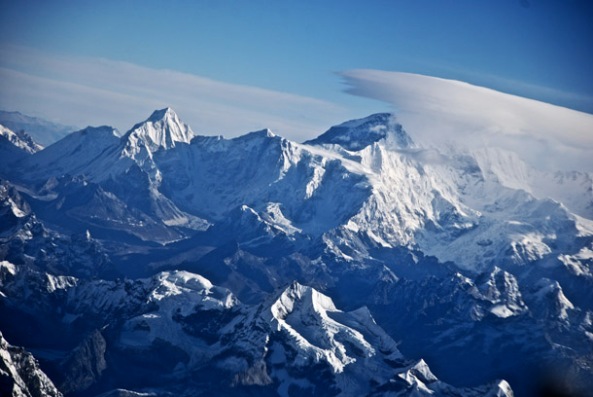
United Arab Emirates
Cultural Sites of Al Ain – Hafit, Hili, Bidaa Bint Saud and Oases Areas (Hili has the ‘Aflaj irrigation’ system which dates back to the Iron Age! This entire region reflects sedentary human occupation of a desert region since the Neolithic period with vestiges of many prehistoric cultures)
Dubai Creek (Recently, an article carried out in Gulf News stated that the Dubai Municipality has submitted an application in a bid to attain the UNESCO World Heritage site status and is awaiting a visit from an expert team in September 2013. The verdict is expected to be announced by June 2014) 
◊—————————————————————◊
Related posts that I’ve written earlier:
Things To Do In Dubai – Like A Tourist In My Own City
Where The Buddha Only Sees!, Kathmandu – Nepal
Gift Wrapped & Preserved For Each Tourist | Chitwan, Nepal
The Abandoned Women Amidst Many Prayers | Pashupatinath Temple, Kathmandu, Nepal
Flying over Mt Everest | Nepal
In the land of Paella | Valencia, Spain
The Magistrate’s House, No 1 Thackeray Road | Kolkata
Smuggled into Godfather’s Sicily | Italy





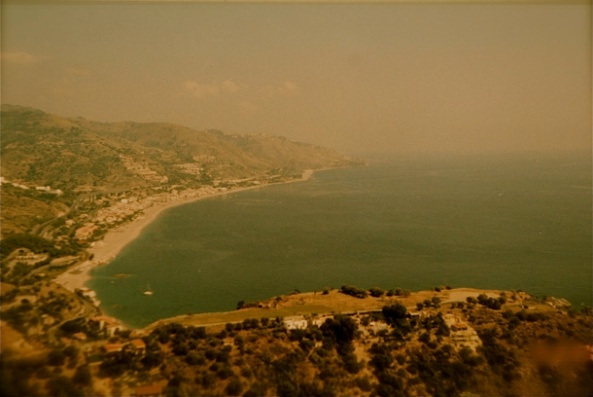














If only we’d been at (some of) these sites at the same time, we would have seen a lot more of each other! What a great idea!
LikeLike
Feel so touched Francine with this comment – the fact that there’s somebody in the world who would have wanted to see more of me. On a more profound note – may be we have bumped into each other but can’t recollect now because we were both 10 kgs lighter! Love you lady:)
LikeLike
I never knew that Al Ain was a World Heritage site! Have visited many but very few on your list. One of the most special was Ghadames in Libya – you’ve given me an incentive to finally write about it.
LikeLike
Sally, then you must write about them – that way we can cover many UNESCO Heritage sites. Inf act, Hili has the ‘Aflaj irrigation’ system which dates back to the Iron Age! And today, Priyanka in Fia FB group left a comment saying that Dubai creek will also be included in the list! Wow!
LikeLike
Brilliant idea to document these Ishita. Plenty more to come am sure. Perhaps we’ve bumped into each other at some of the sites 🙂 I too never knew Al Ain was listed. Am heading to Vietnam next month and Halong Bay is on our itinerary. x
LikeLike
Thank you for dropping by… actually, I had been documenting this in a page before… ‘stock taking’. Honestly, I think the love for ‘heritage’ sites must have come from growing up in a decadent city with many old buildings. In the inflight magazine in Thai Airways, I read about Vietnam… look forward to all the ‘virtual updates’!
LikeLike
Wow, that’s quite a few WHS! Do consider joining GoUNESCO, it’s a fun challenge which goes well with your wanderlust methinks.
LikeLike
Thanks very much Ajay for dropping by. I hopped onto your site – quite an amazing stuff going on – would love to take up the challenge for sure. Do look forward to you dropping in:)
LikeLike
Pingback: Arabian Pilgrimage Food Tour With Frying Pan Adventures |
Ah that is a long list! Look forward to seeing the US sites added to this 🙂
LikeLike
If you live in Europe and just drive out of any city you live in, you would have covered atleast a dozen UNESCO World Heritage sites! Jokes apart, I feel very thrilled with the term ‘heritage’, probably because of my upbringing in Kolkata.
LikeLike
Fascinating. These images make me want to pack my bag and go!
LikeLike
Mission accomplished Wendy!
LikeLike
Hello There. I found your blog the usage of msn.
This is an extremely smartly written article. I will make sure to bookmark it and
return to read extra of your helpful info.
Thanks for the post. I will certainly comeback.
LikeLike